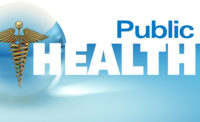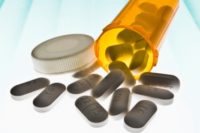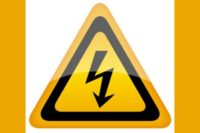Many young children overdosing on medicines at home
Parents reminded to keep meds “Up and Away and Out of Sight”
 Each year, one of every 150 two–year–olds visits an emergency department in the United States for an unintentional medication overdose, most often after finding and eating or drinking medicines without adult supervision. To inform parents and caregivers about safe medication storage and what to do in case of an emergency, CDC, the Consumer Healthcare Products Association Education Foundation and a coalition of partners are launching an educational program, Up and Away and Out of Sight, that encourages parents to follow a few simple steps to protect children.
Each year, one of every 150 two–year–olds visits an emergency department in the United States for an unintentional medication overdose, most often after finding and eating or drinking medicines without adult supervision. To inform parents and caregivers about safe medication storage and what to do in case of an emergency, CDC, the Consumer Healthcare Products Association Education Foundation and a coalition of partners are launching an educational program, Up and Away and Out of Sight, that encourages parents to follow a few simple steps to protect children.
“Parents may not be aware of the danger posed by leaving medications where young children can reach them. In recent years, the number of accidental overdoses in young children has increased by 20 percent,” said Dan Budnitz, M.D., M.P.H., director of CDC’s Medication Safety Program. “A few simple steps – done every time – can protect our children.”
The program recommends that parents:
• Pick a place children cannot reach -- a storage place too high for a child to reach or see.
• Put medicines and vitamins away every time you use them. Never leave medicines or vitamins out on a kitchen counter or at a sick child’s bedside, even if you have to give the medicine again in a few hours.
• Make sure the safety cap is locked. If the medicine has a locking cap that turns, twist it until the click is heard.
• Teach children about medicine safety. Never tell children that medicine is candy to get them to take it, even if the child does not like to take his or her medicine.
• Tell guests about medicine safety. Ask houseguests and visitors to keep purses, bags, or coats that have medicines in them up and away and out of sight when they are visiting.
• Be prepared in case of emergency. Program the poison control number into home and cell phones (1–800–222–1222).
Beginning in the 1970s, the U.S. Consumer Product Safety Commission required that most medicines have child–resistant packaging, a significant safety improvement that has saved hundreds of children’s lives. However, child–resistant caps must be used properly. The Up and Away and Out of Sight educational program is part of the larger public–private partnership, the PROTECT Initiative, aimed at reducing unintentional medication overdoses in children.
The PROTECT partners are also working on innovative safety packaging specifically designed to limit the amount of medication that could be ingested by a child even if a child–resistant cap has not been replaced properly. A number of leading nonprescription drug companies have committed to incorporating product enhancements for pediatric liquid acetaminophen medicines. In addition, several over–the–counter medications are available in individual doses, which can limit the amount of medication that children could get into.
“Even with improvements to packaging, no medication package can be 100 percent childproof,” warns Richard Dart, M.D., president of the American Association of Poison Control Centers.
For more information on the Up and Away educational program, visit www.UpAndAway.org or in Spanish www.UpAndAway.org/es .
For more information about what CDC is doing to protect children from adverse drug events, visit www.cdc.gov/medicationsafety.
Looking for a reprint of this article?
From high-res PDFs to custom plaques, order your copy today!






